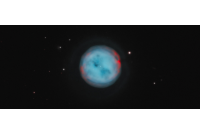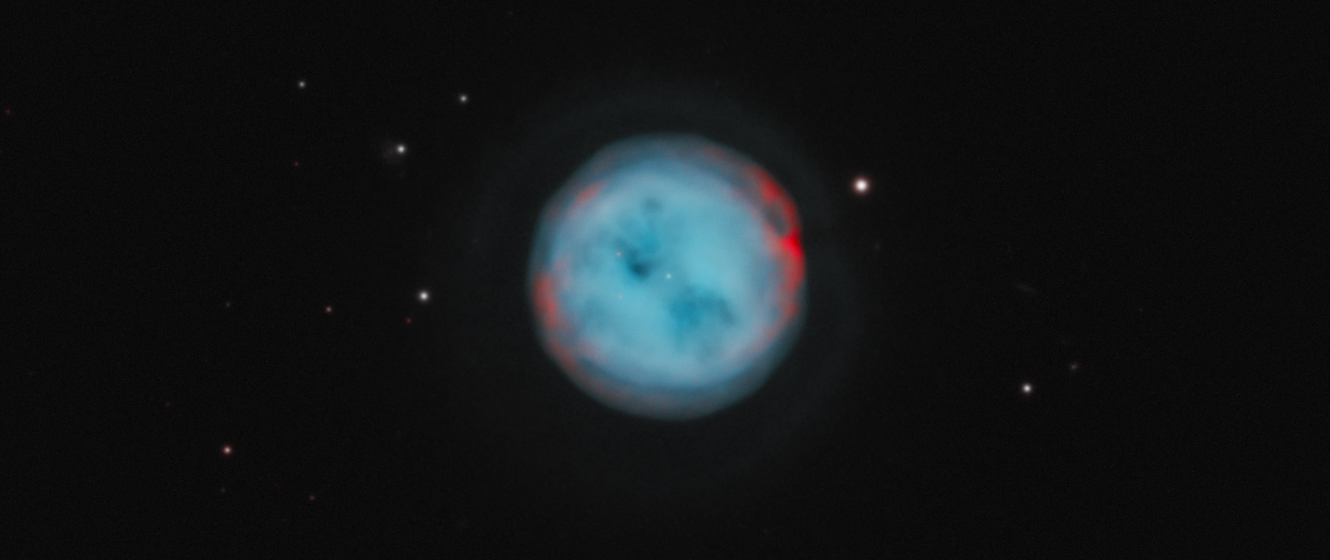
In this episode of What's in the Sky this Month, Teagan reviews some of the beautiful celestial objects you can see in the month of April 2023!
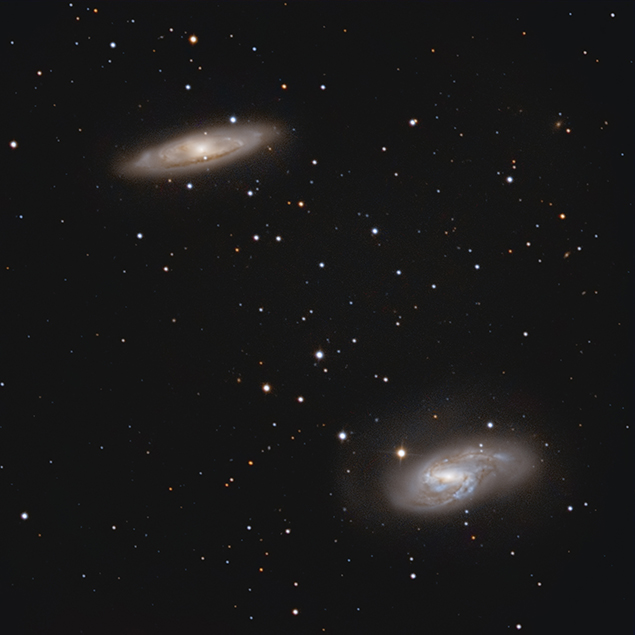
Image credit: Alex Cherney
M65 & M66
- Type: Galaxies
- Constellation: Leo (both)
- Distance: 41 million light-years (both)
- Magnitude: 10.1 (M65) and 9.7 (M66)
- Apparent Diameter: 8’ (M65) and 10’ (M66)
April brings the start of spring - also known as “Galaxy Season” to astronomers everywhere - and there’s a fine pair to be found in the constellation of Leo, the Lion. The galaxies were discovered simultaneously by the French astronomer Charles Messier on March 1st, 1780, who noted that they both appeared within the same low powered field of view.
If you live under dark skies, you may be able to spot the pair with binoculars, but otherwise, most scopes will do the job. Of the two, M66 is slightly larger and brighter, with small scopes showing a sizable halo with a bright, oval core. Larger scopes (250mm or more) will reveal some texture, with dark bands near the core and the possibility of seeing the spiral arms. It’s a similar story with M65, with an extended halo toward the south. Lastly, look out for NGC 3628, a magnitude 10 galaxy located toward the northeast.
Telescopically, all three should fit within a low-powered field of view, but once you’re at about 50x you’re pushing your luck. M66 is the brightest and appears elongated, with a conspicuous halo. M65 appears as a slightly fainter, oval patch while NGC 3628 appears as a faint streak toward the northeast.
OUR NEAREST NEIGHBORS
Jupiter, Uranus, and Neptune are too close to the Sun to be observable this month, but Mercury continues to climb into the evening twilight. Start searching low over the western horizon at about 15 minutes after sunset; the planet will be highest at greatest elongation on the 11th. Look for a very thin new Moon below it on the 20th, and then to its upper left the following night. Mercury will then be lost in the twilight just a few days after. Venus is also visible in the west after sunset and passes the Pleiades on the 10th and 11th when 2.6 degrees will separate the pair on both evenings. A crescent Moon then joins Venus on the 22nd and 23rd. Mars spends April in Gemini and is joined by the nearly first quarter Moon on the 25th. Saturn is now visible in the predawn sky and can be seen low in the east-southeast shortly before sunrise. A waning crescent Moon appears five degrees to the lower left of the planet on the 16th. The Moon itself turns full shortly after midnight, eastern time, on the 6th, with New Moon just after midnight, eastern time, on the 20th.
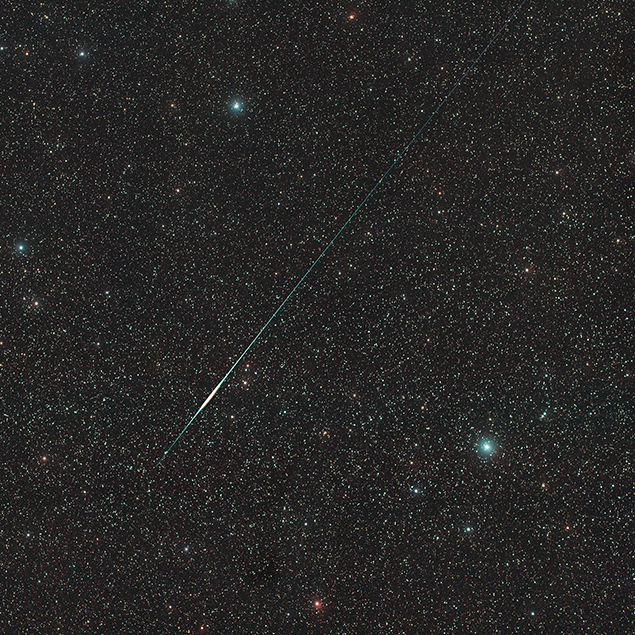
Image credit: Pawel Zgrzebnicki
The Lyrid Meteor Shower
The Lyrid meteor shower reaches its maximum at around 9 PM ET on the 22nd, with the crescent Moon setting early in the evening. These meteors are bright and can produce fireballs.
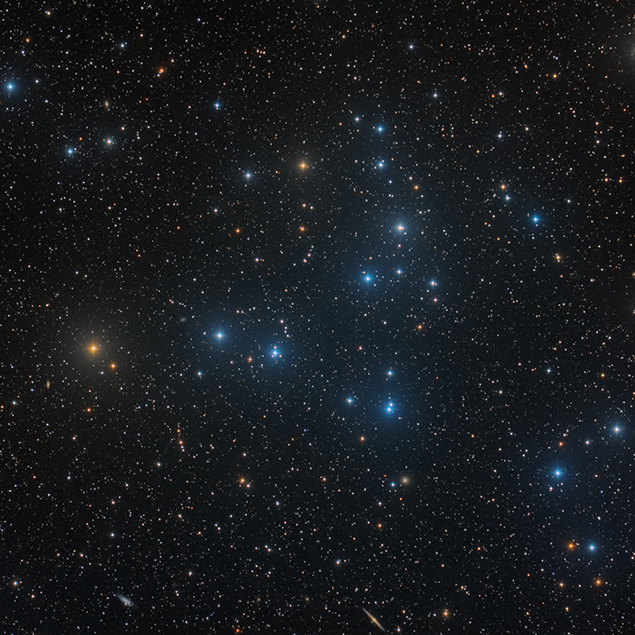
Image credit: Alberto Pisabarro
Melotte 111 - The Coma Star Cluster
Visible from suburban locations, the Coma Star Cluster is located roughly midway between Denebola in Leo and Cor Caroli in Canes Venatici. This Y-shaped cluster is large, relatively dense, and best observed with binoculars.
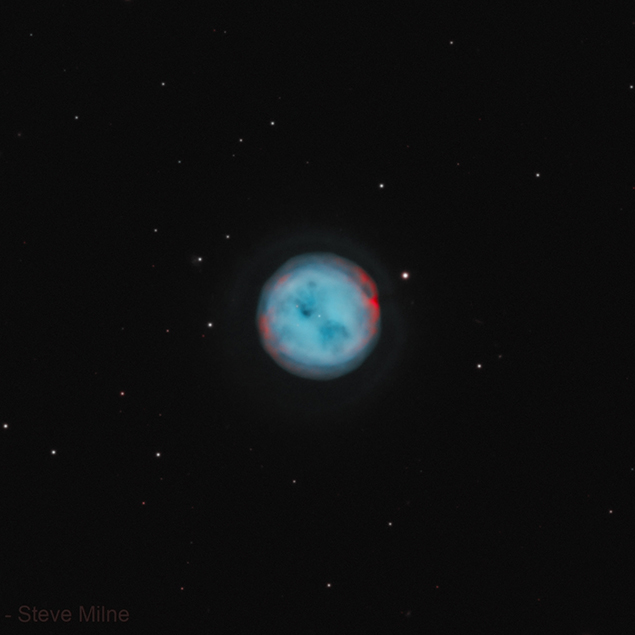
Image credit: Steve Milne
M97 - The Owl Nebula
First observed by Charles Messier in March 1781, M97 lies just two degrees from Merak, one of the stars that form the Big Dipper. It’s visible in a small telescope at low power, but you’ll most likely need a high magnification to see the “eyes” that give the nebula its name.
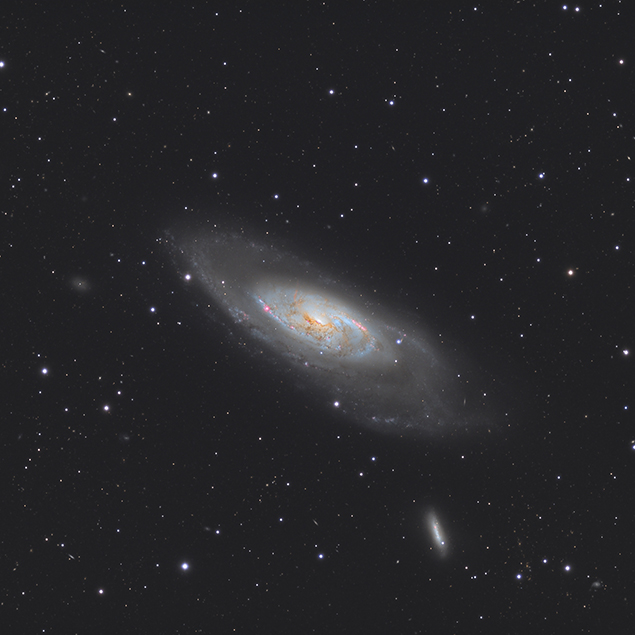
Image credit: David Wills
M106
Discovered by Pierre Mechain in July 1781, M106 is located within the same binocular field of view as 3 CVn. Small scopes will show an elongated patch with a bright core, while larger scopes will reveal a mottled surface. Look out for hints of its spiral arms with averted vision.
STELLAR CONCEPTS
Light-Year: While it’s possible to specify distances within the solar system in miles and kilometers, those units of measurement become meaningless when applied to all the stars and other objects that lie beyond. Therefore, astronomers use the light-year to describe these distances. Light travels 186,282 miles per second or roughly 5.87 trillion miles in a year. Proxima Centauri, the nearest star to the Sun, is approximately 25 trillion miles away, and its light has taken 4.3 years to reach us.
This Article was Last Updated on 07/24/2023

